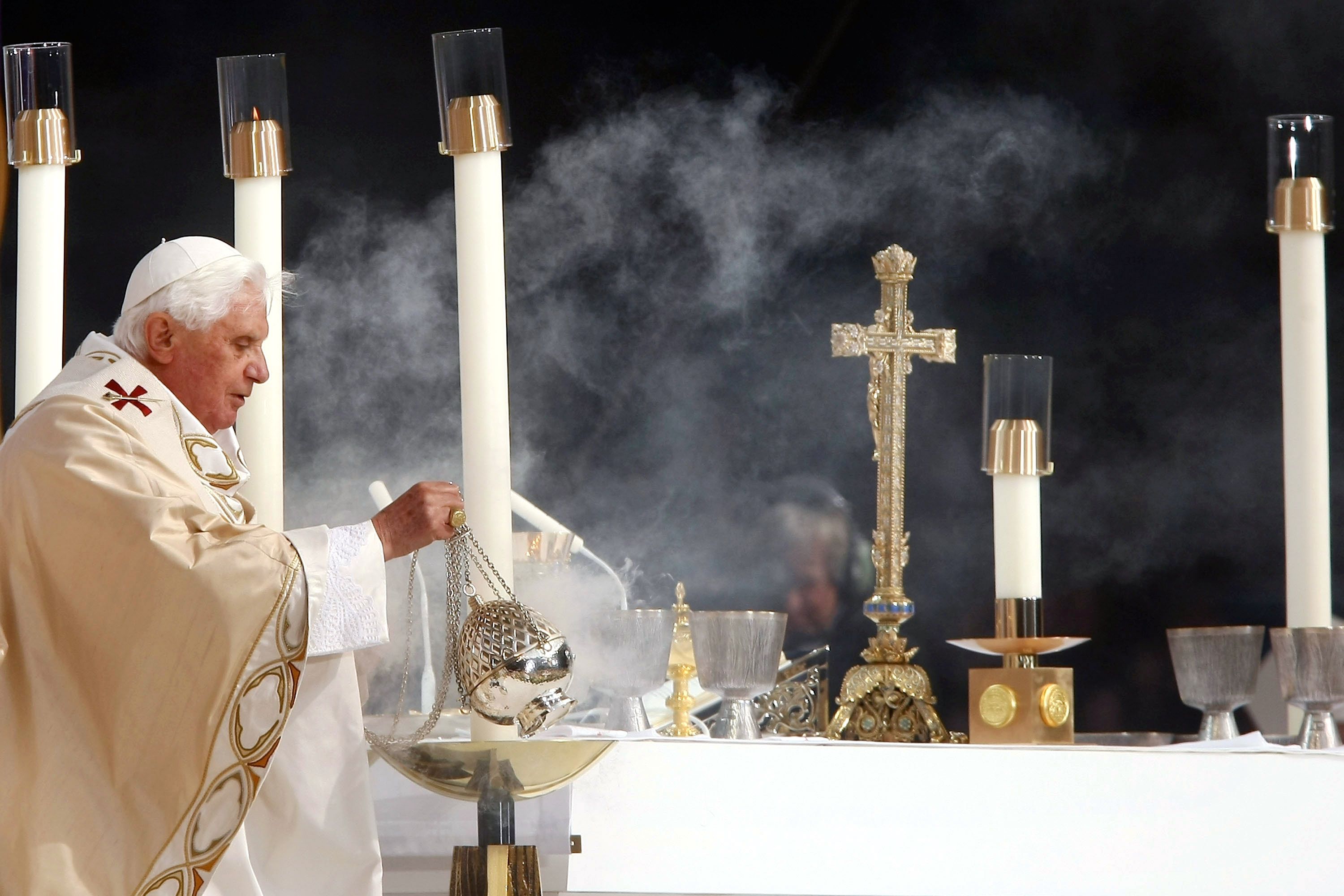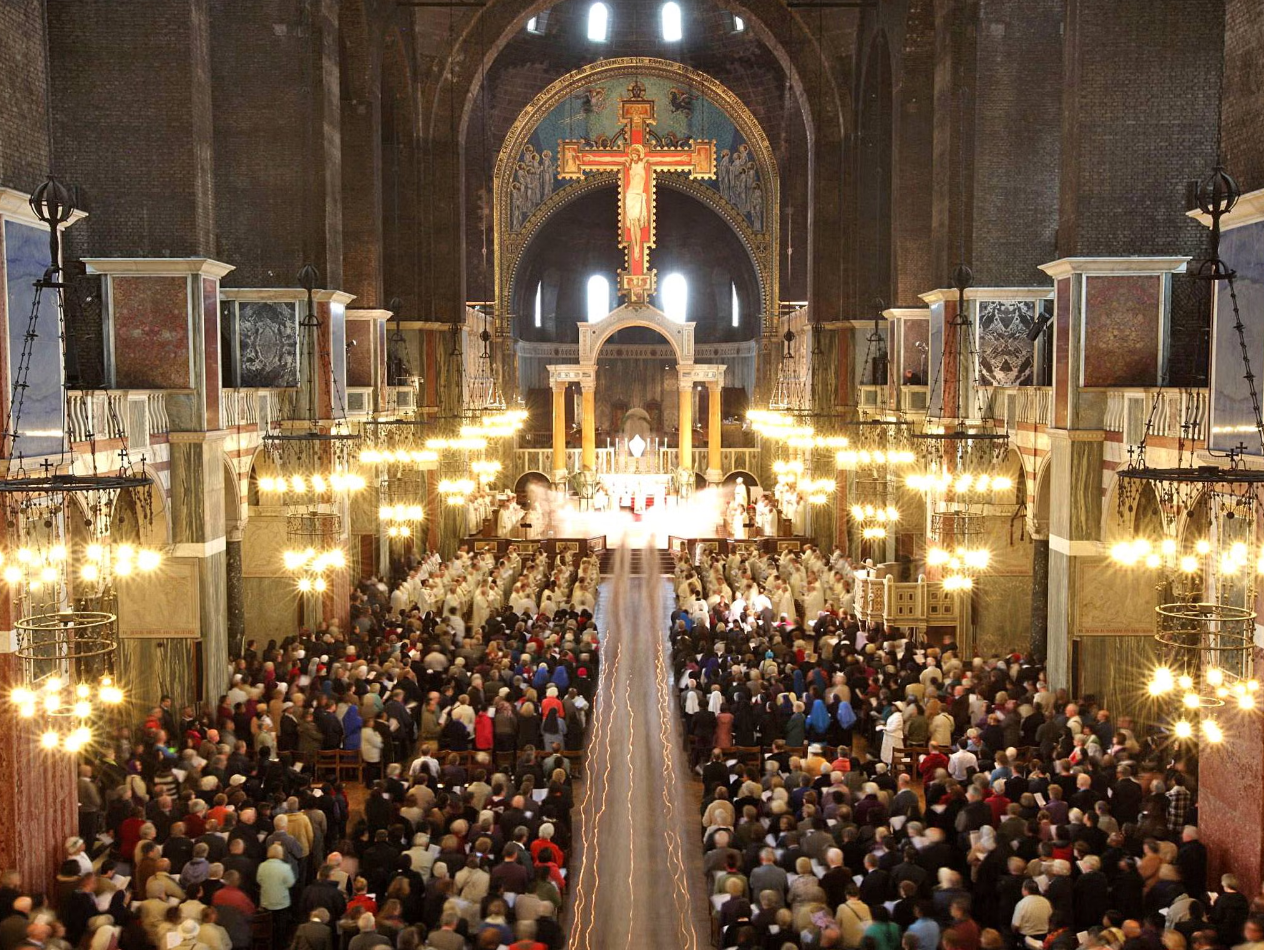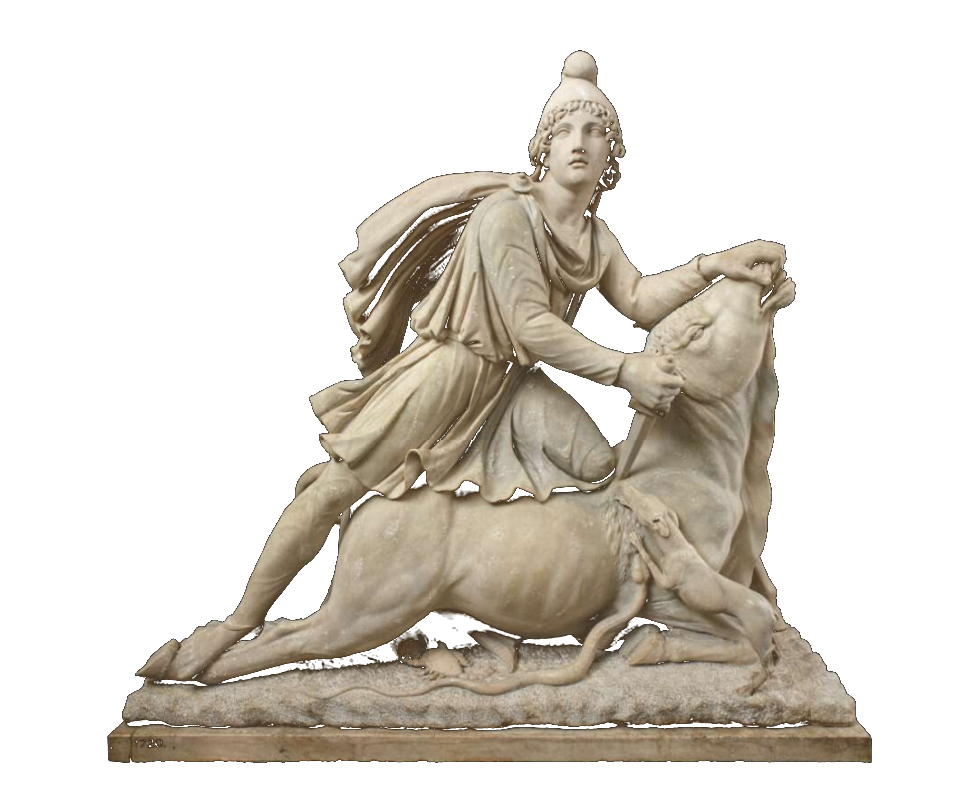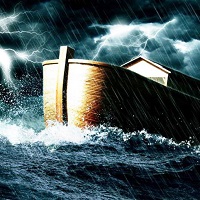The term "Eucharist" derives from the Greek word for thanksgiving and refers to the ritual commemoration of the Last Supper. While the practice of the Lord's Supper is rooted in the New Testament (Matthew 26:26-29; 1 Corinthians 11:23-26), the doctrine of transubstantiation as understood today developed much later. Early Christians, including the apostles, viewed the bread and cup as symbols of Christ's body and blood, instituted as a remembrance: And he took bread, and gave thanks, and brake it, and gave unto them, saying, This is my body which is given for you: this do in remembrance of me. Likewise also the cup after supper, saying, This cup is the new testament in my blood, which is shed for you (Luke 22:19-20 KJV).[1][2]
The specific idea of transubstantiation—borrowing Aristotelian philosophy of substance and accidents—emerged in the medieval period. It was first formally articulated around the 11th century and dogmatically defined by the Roman Catholic Church at the Fourth Lateran Council in 1215 AD, in response to theological debates and heresies.[3][4] Prior to this, early church fathers like Justin Martyr (c. 150 AD) and Tertullian (c. 200 AD) described the elements symbolically, calling the bread a "figure" of Christ's body, not its literal substance.[1][5] This evolution from symbolism to literalism reflects human tradition overtaking biblical simplicity, with influences from Gnostic ideas that denied appearances in favor of hidden realities.[1]
Conflicts Within Catholic and Orthodox Doctrines
While both Roman Catholicism and Eastern Orthodoxy affirm a "real presence" in the Eucharist, their doctrines reveal internal inconsistencies and mutual conflicts, underscoring the man-made nature of the teaching. Catholicism defines transubstantiation precisely: the substance of bread and wine changes into Christ's body and blood at the priest's words of institution (This is my body), while appearances (accidents) remain. This is a dogmatic requirement, rooted in Scholastic philosophy.[2][6][7]
In contrast, Eastern Orthodoxy views the change as a profound mystery, rejecting the need for philosophical explanation. They affirm that the bread and wine become Christ's body and blood truly and substantially, but the exact "how" or timing is not dogmatically fixed—often linked to the Epiklesis (invocation of the Holy Spirit) rather than the words of institution. Orthodox sources emphasize it as an unsearchable mystery known only to God, avoiding Catholic precision.[8][9][10]
These differences create conflicts: If both claim apostolic tradition, why the divergence on timing and explanation? Both Catholic and Orthodox traditions have the miracle happening at different times in their liturgical texts—the Catholic at the words of institution, the Orthodox at the Epiklesis. Internally, Catholicism's practice of withholding the cup from the laity (since 1415 AD) contradicts Jesus' command: Drink ye all of it (Matthew 26:27 KJV), while Orthodoxy uses leavened bread and a single spoon, mixing elements contrary to the biblical separation of bread and cup.[1][11] Such variances expose the doctrine as evolving human invention, not unchanging divine truth.
Contradictions with Scripture: Logical and Biblical Refutations
The entire theology of transubstantiation contradicts Scripture, both logically and textually. Jesus' institution of the Supper uses symbolic language consistent with His other metaphors, such as I am the door (John 10:9 KJV) or I am the vine (John 15:5 KJV).[6] A literal interpretation leads to absurdities and direct biblical opposition.
Jesus Refers to the Elements in Their Natural State After the Supposed Change
A logical refutation arises from the Last Supper accounts. After blessing the elements and declaring, This is my body... This is my blood of the new testament (Matthew 26:26-28 KJV), Jesus immediately calls the cup's contents this fruit of the vine (Matthew 26:29 KJV: But I say unto you, I will not drink henceforth of this fruit of the vine, until that day when I drink it new with you in my Father's kingdom). In both Catholic and Orthodox traditions, the timing of the transubstantiation miracle happens before Jesus mentions the elements in their natural form. For Catholics, the change occurs at the proclamation (This is my blood), and for Orthodox, while linked to the Epiklesis in liturgy (which follows the words of institution), the biblical narrative still has Jesus declaring the elements as His body and blood before referring to the cup as fruit of the vine. If transubstantiation had occurred—at the proclamation (Catholic view) or during the overall consecration including blessing (Orthodox view)—Jesus would be calling His own literal blood "fruit of the vine," making Him a deceiver. Paul echoes this in 1 Corinthians 11:26-27 KJV: For as often as ye eat this bread, and drink this cup... Whosoever shall eat this bread, and drink this cup of the Lord, unworthily, shall be guilty... Post-supposed change, the elements are still "bread" and "cup," not flesh and blood.[1][2][6] This proves no molecular transformation happened; the language is symbolic of future sacrifice.
John 6:63
Proponents often cite John 6:53-56 KJV (Except ye eat the flesh of the Son of man, and drink his blood, ye have no life in you...) as proof of literal consumption. However, John 6:63 KJV demolishes this: It is the spirit that quickeneth; the flesh profiteth nothing: the words that I speak unto you, they are spirit, and they are life. Jesus explicitly states His words are spiritual, not carnal. Eating literal flesh "profiteth nothing"—it provides no spiritual benefit. The context is belief and faith: He that believeth on me hath everlasting life (John 6:47 KJV). The "eating" and "drinking" symbolize receiving Christ spiritually through faith, not physical ingestion. Notably, John 6 predates the Last Supper, so it cannot mandate a literal Eucharistic transformation.[2][6][12]
Additional Proofs Against Transubstantiation
Beyond the above, several scriptural proofs further refute the doctrine.
- Biblical Prohibition on Drinking Blood: Leviticus 17:14 KJV commands: For it is the life of all flesh; the blood of it is for the life thereof: therefore I said unto the children of Israel, Ye shall eat the blood of no manner of flesh: for the life of all flesh is the blood thereof: whosoever eateth it shall be cut off. This is reiterated in the New Testament: That ye abstain from... blood (Acts 15:29 KJV). Transubstantiation requires drinking literal blood, violating this divine law and equating to cannibalism.[6][13][14]
- Christ's Once-for-All Sacrifice: The Mass presents the Eucharist as a re-offering of Christ's sacrifice for sins. Yet Hebrews 10:10-12 KJV states: By the which will we are sanctified through the offering of the body of Jesus Christ once for all. And every priest standeth daily ministering and offering oftentimes the same sacrifices, which can never take away sins: But this man, after he had offered one sacrifice for sins for ever, sat down on the right hand of God. Christ's death was sufficient once; no repeated sacrifice is needed or possible.[2][6][15]
- Violation of the Incarnation and Idolatry: Christ's human nature limits Him to one physical location (John 1:14 KJV). Multi-location in Eucharists worldwide denies this. Adoring the elements as God leads to idolatry, worshipping created things (Romans 1:25 KJV).[6]
Conclusion
Transubstantiation is a false doctrine, born of tradition and contradicting the clear teaching of Scripture. The Lord's Supper is a memorial of Christ's finished work, observed with unleavened bread and fruit of the vine in remembrance, not a literal re-sacrifice. True spiritual life comes through faith in Christ, as His words are spirit, and they are life (John 6:63 KJV). For further reading, consult resources like https://www.bible.ca/ntx-communion-transubstantiation.htm, https://www.gotquestions.org/transubstantiation.html, and https://carm.org/roman-catholicism/transubstantiation-and-the-real-presence/.
Source of the Catechism Explanation: The Catholic explanation of the Eucharist and transubstantiation can be found in the Catechism of the Catholic Church, paragraphs 1373-1381.
References
- Bible.ca - Transubstantiation
- GotQuestions.org - Transubstantiation
- Catholic.com - Transubstantiation for Beginners
- TheCatholicSpirit.com - Transubstantiation: Not as difficult as it sounds
- CARM.org - Tertullian and Transubstantiation
- CARM.org - Transubstantiation and the Real Presence
- Vatican.va - Catechism of the Catholic Church, paragraphs 1373-1381
- AncientFaith.com - The Doctrine of Transubstantiation in the Orthodox Church
- OCA.org - Why Not “Open Communion”?
- Tasbeha.org - The Doctrine of Transubstantiation
- Bible.ca - Greek Orthodox Church Eucharist is Unbiblical Witchcraft
- CARM.org - Eat My Flesh? John 6:51-55 and Transubstantiation
- GotQuestions.org - Transubstantiation
- Bible.ca - Transubstantiation
- GotQuestions.org - Transubstantiation
...





